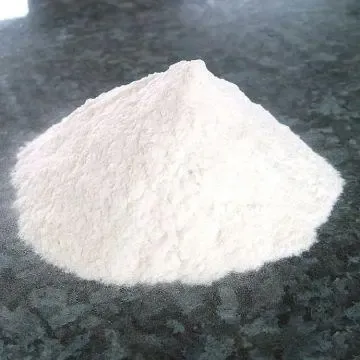
9 月 . 05, 2024 10:57 Back to list
cas: 13463-67-7 titanium dioxide powder
Titanium Dioxide Powder An Overview
Titanium dioxide (TiO2), identified by the CAS number 13463-67-7, is a versatile and widely used white pigment in various applications ranging from paints to cosmetics. Known for its excellent opacity, brightness, and weather resistance, titanium dioxide powder has become an essential ingredient in many products.
Chemical Properties and Structure
Titanium dioxide is a compound composed of titanium and oxygen, exhibiting several crystal structures, with the most common being anatase and rutile. The rutile form is denser and offers enhanced optical properties, while the anatase form is more photocatalytically active. Its chemical inertia and resistance to UV radiation make titanium dioxide an ideal choice for outdoor applications, ensuring longevity and stability.
Applications in Various Industries
1. Paints and Coatings Titanium dioxide is predominantly used as a pigment in paints and coatings, providing excellent coverage, durability, and UV protection. Its ability to scatter light contributes to the bright white appearance that is highly favored in architectural, automotive, and industrial applications.
2. Plastics In the plastics industry, titanium dioxide serves as both a pigment and a reinforcing agent. It enhances the opacity and brightness of products while improving their resistance to degradation from UV exposure.
cas: 13463-67-7 titanium dioxide powder

3. Cosmetics Titanium dioxide is extensively used in the cosmetic industry, particularly in sunscreens, where it acts as a physical UV filter. Its non-toxic nature makes it suitable for products applied directly to the skin, providing additional benefits such as a matte finish in makeup formulations.
4. Food Industry Titanium dioxide is also utilized as a food additive, commonly denoted as E171. It is used to enhance the whiteness and brightness of food products, though its safety has been a subject of regulatory scrutiny and debate.
5. Photocatalysis and Environmental Applications The photocatalytic properties of titanium dioxide have led to its use in environmental applications, such as self-cleaning surfaces and air purification. Under UV light, TiO2 can break down organic pollutants, making it an effective material for improving air quality.
Safety and Regulatory Aspects
Despite its wide-ranging applications, there have been concerns regarding the safety of titanium dioxide, particularly in inhalable forms or as an additive in food products. Regulatory agencies around the world are continuously reviewing safety data to ensure consumer protection. In the European Union, for instance, there have been initiatives to ban the use of titanium dioxide as a food additive due to potential health risks associated with its nanoparticle form.
Conclusion
Titanium dioxide powder, with its diverse range of applications and robust properties, remains a critical component in numerous industries. However, ongoing research and regulatory scrutiny underline the importance of balancing its benefits with safety considerations. As innovation in nanotechnology and material science progresses, the future of titanium dioxide may explore new formulations and applications that maximize its advantages while addressing potential health concerns. Understanding these dynamics is essential for manufacturers, consumers, and regulatory bodies alike, ensuring that the products developed harness the benefits of titanium dioxide responsibly and sustainably.
-
Lithopone for Plastic & TiO2 R-5568/SK-6658 Masterbatch Solutions
NewsMay.30,2025
-
China Leading Rutile TiO2 Manufacturer - R5566 & R996 Grades Available
NewsMay.30,2025
-
High-Purity Anatase & Rutile TiO2 Powder Trusted Manufacturer
NewsMay.30,2025
-
High-Purity Anatase Products Trusted Supplier & Manufacturer
NewsMay.29,2025
-
Best Price Eco-Friendly Rutile TiO2 Supplier & Wholesale Factory
NewsMay.29,2025
-
Chinese Anatase Titanium Dioxide for Ceramic Glaze Reliable Supplier
NewsMay.29,2025
